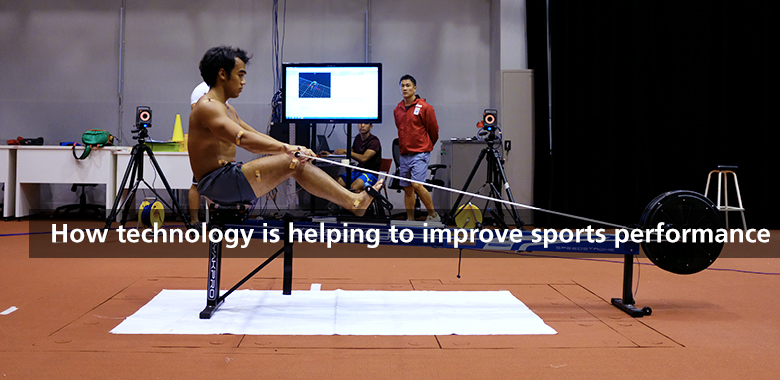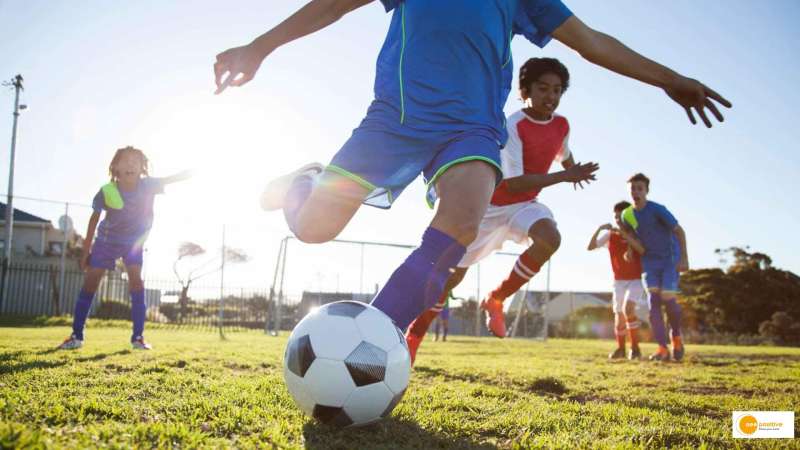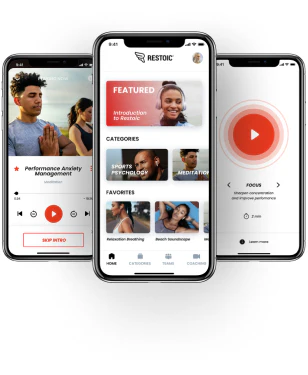Sports
How Technology is Revolutionizing Sports Training and Performance

The world of sports has seen significant transformations over the years, and one of the most influential factors driving this change is technology. From advanced training equipment to data analytics, technology is reshaping the way athletes train, perform, and recover. This article explores the key technological innovations that are revolutionizing sports training and performance.
How Technology is Revolutionizing Sports Training and Performance

1. Wearable Technology
Wearable technology has become a game-changer for athletes at all levels. These devices allow athletes and coaches to track vital statistics such as heart rate, speed, distance, and more in real-time. One of the most popular forms of wearable technology is fitness trackers, which are equipped with sensors that monitor various metrics. For instance, devices like the WHOOP Strap and Garmin watches measure heart rate variability (HRV), sleep quality, and even recovery levels, giving athletes valuable insights into their physical condition.
Smart clothing, embedded with sensors, is another innovation in wearable tech. These garments can provide more detailed information about muscle activity and body mechanics, enabling athletes to fine-tune their movements for optimal performance.
2. Artificial Intelligence and Machine Learning
Artificial Intelligence (AI) and Machine Learning (ML) have become powerful tools in sports training. AI-driven platforms can analyze vast amounts of data to provide insights into an athlete’s performance and suggest improvements. For example, IBM Watson is used in tennis to analyze match footage, identifying patterns and suggesting strategies based on the opponent’s weaknesses.
Coaches are now using machine learning algorithms to predict injury risks by analyzing athletes’ movement patterns. By identifying subtle signs of fatigue or stress, AI can help prevent injuries before they happen. This predictive capability is crucial in prolonging athletes’ careers and maintaining peak performance.
3. Virtual Reality and Augmented Reality
Virtual Reality (VR) and Augmented Reality (AR) are transforming how athletes train. VR creates immersive environments that allow athletes to simulate game scenarios, helping them prepare mentally and tactically without the risk of injury. For example, NFL quarterbacks use VR to practice plays and improve decision-making skills without stepping onto the field.
AR, on the other hand, enhances the real-world environment by overlaying digital information. It can be used to provide real-time data during training, such as showing the ideal trajectory of a basketball shot or the perfect golf swing. AR training tools are also being used in sports like cycling and skiing, where athletes can visualize their performance metrics as they move.
4. Biomechanics and Motion Capture Technology
Biomechanics and motion capture technology have become essential tools in optimizing athletic performance. High-speed cameras and motion sensors can capture every detail of an athlete’s movements, allowing for detailed analysis. This technology helps identify inefficiencies in movement patterns, which can be corrected to improve performance and reduce the risk of injury.
For example, in baseball, motion capture technology is used to analyze pitchers’ throwing motions. By examining the mechanics of a pitch, coaches can help athletes adjust their technique to reduce strain on their arms and increase velocity.
Biomechanics is also used in rehabilitation. Athletes recovering from injury can have their movements analyzed to ensure they are not compensating for the injury in a way that could lead to further harm. This ensures a safer and more effective recovery process.
5. Data Analytics
Data analytics has become a cornerstone of modern sports training. Coaches and athletes now have access to an enormous amount of data that can be analyzed to improve performance. Advanced analytics tools can track and analyze every aspect of an athlete’s game, from shooting accuracy to defensive positioning.
In soccer, for example, data analytics platforms are used to track player movement and positioning throughout a game. This information helps coaches identify areas for improvement and create more effective game strategies. Data analytics also plays a significant role in scouting, allowing teams to evaluate potential recruits based on performance metrics rather than subjective opinions.
6. Recovery and Rehabilitation Technologies
Recovery is just as important as training when it comes to athletic performance, and technology has made significant strides in this area as well. Cryotherapy, which involves exposing the body to extremely cold temperatures, has become a popular recovery tool among athletes. The cold temperatures reduce inflammation and promote faster recovery after intense workouts or games.
Compression gear and pneumatic compression devices are also widely used in recovery. These devices improve blood circulation and reduce muscle soreness, allowing athletes to recover more quickly between training sessions.
How Technology is Revolutionizing Sports Training and Performance

Rehabilitation technologies have advanced significantly, with devices such as electrical stimulation machines and laser therapy becoming standard tools in sports medicine. These technologies speed up the healing process and help athletes return to their peak condition more quickly.
7. Genomics and Personalized Training
Advances in genomics have opened the door to personalized training programs based on an athlete’s genetic makeup. By analyzing an athlete’s DNA, trainers can tailor workouts, nutrition plans, and recovery strategies to maximize performance. This approach takes into account factors like muscle fiber composition, metabolism, and injury susceptibility, allowing for a more individualized training regimen.
For example, some athletes may be genetically predisposed to excel in endurance sports, while others may be better suited for explosive power sports. By understanding these genetic factors, coaches can optimize training plans to align with an athlete’s natural abilities.
8. The Role of Drones and Cameras
Drones and cameras are being used to capture overhead views of training sessions and games, providing a unique perspective that can be invaluable for tactical analysis. Coaches can review footage from angles that were previously impossible to capture, giving them a deeper understanding of team dynamics and individual player performance.
In sports like football and rugby, drones are used to monitor training drills, allowing coaches to evaluate positioning, spacing, and movement patterns. This technology enhances tactical decision-making and helps teams improve their on-field strategies.
Conclusion
Technology is undeniably transforming the world of sports, offering athletes and coaches tools that were unimaginable just a decade ago. From wearable tech and AI to motion capture and recovery innovations, the future of sports training and performance is being shaped by continuous advancements in technology. As these technologies continue to evolve, athletes will have even more opportunities to push the boundaries of human performance, achieving new levels of excellence in their respective sports.
How Technology is Revolutionizing Sports Training and Performance
Sports
“The Impact of Sports on Youth Development: Building Character and Confidence”

In today’s fast-paced world, sports have become more than just physical activities. For young people, they are powerful tools for personal development, helping shape not just physical abilities but also mental and emotional skills. From teamwork to discipline, the impact of sports on youth development is profound, fostering character and confidence that can last a lifetime.
“The Impact of Sports on Youth Development: Building Character and Confidence”

1. Character Building Through Discipline and Responsibility
One of the most significant ways sports influence youth development is by instilling discipline. Whether it’s waking up early for practice or following the rules of the game, young athletes learn the value of consistency and structure. Discipline in sports translates into real life, teaching young people to manage their time effectively, prioritize tasks, and adhere to commitments.
Responsibility is another important trait that sports foster in youth. In team sports, players must rely on each other and hold themselves accountable for their roles. Individual sports, on the other hand, teach athletes to take ownership of their success and failures. These lessons contribute to the development of a strong sense of personal responsibility that extends into other aspects of life, from schoolwork to future careers.
2. Developing Confidence Through Achievement
Confidence is a cornerstone of personal development, and sports offer numerous opportunities for young people to build it. Achieving success in a game—whether through a win, a personal best, or mastering a new skill—can boost self-esteem. Even overcoming challenges, such as bouncing back from a loss or injury, contributes to a sense of accomplishment and resilience.
By setting and achieving goals, youth learn that hard work leads to progress. This sense of achievement builds confidence not only in their athletic abilities but also in other areas of their lives. The courage to take on challenges and the ability to persevere in the face of setbacks are critical life skills developed through sports participation.
3. Teamwork and Social Skills
Social development is a key component of youth development, and sports provide an excellent platform for young people to hone their social skills. Team sports, in particular, teach the value of collaboration, communication, and empathy. Working with teammates to achieve a common goal fosters a sense of belonging and teaches athletes how to interact with different personalities and perspectives.
In addition, sports encourage youth to respect authority, whether it’s a coach, referee, or team captain. Learning to follow instructions, accept feedback, and handle constructive criticism is an essential part of personal growth. These social interactions within the sporting environment help shape young people into more well-rounded individuals who can navigate relationships and social dynamics outside of sports.
4. Resilience and Perseverance
One of the most valuable life lessons that sports impart to youth is resilience. In sports, failure is inevitable—whether it’s losing a game, missing a shot, or not performing up to expectations. However, sports also teach young people how to handle these disappointments and bounce back stronger. This resilience, developed through overcoming challenges, is an essential skill that helps youth face difficulties in other areas of life, such as academics, friendships, and future career challenges.
Perseverance, or the ability to keep pushing forward despite obstacles, is another trait nurtured through sports. Young athletes learn that success often requires hard work, dedication, and persistence over time. This mindset can carry over into other areas, helping them pursue long-term goals and overcome setbacks without giving up.
5. Academic Benefits
The connection between sports and academic success is often underestimated, but research shows that participating in sports can improve academic performance. Sports teach time management and focus—skills that are essential for balancing schoolwork with athletic commitments. The discipline learned on the field often translates to better study habits and improved concentration in the classroom.
Additionally, the self-confidence gained from sports can lead to a more positive attitude toward learning. Many student-athletes report feeling more motivated in their studies because they want to excel both on the field and in the classroom. Some studies also suggest that students who participate in sports tend to have higher GPAs and are more likely to graduate.
6. Physical and Mental Health
While the physical benefits of sports—such as improved fitness, strength, and coordination—are well-known, the mental health advantages are equally important. Regular physical activity through sports helps reduce stress, anxiety, and depression, which are common challenges among youth. Exercise releases endorphins, which are natural mood boosters, and being part of a team can offer emotional support and a sense of belonging.
Moreover, sports provide a constructive outlet for energy and emotions, which can be especially beneficial for adolescents navigating the complexities of growing up. It offers a positive way to channel stress, frustration, or anger, which can prevent negative behaviors or unhealthy coping mechanisms.
7. Building Leadership Qualities
Sports, particularly team sports, often put young people in positions where they must step up as leaders. Whether it’s being a team captain, leading a huddle, or motivating teammates, these experiences help develop leadership qualities at an early age. Young athletes learn how to guide, support, and inspire others while also taking responsibility for their team’s performance.
“The Impact of Sports on Youth Development: Building Character and Confidence”

Conclusion: A Foundation for Lifelong Success
The impact of sports on youth development goes far beyond the physical benefits. It shapes young people into confident, disciplined, and resilient individuals. By building character, fostering social skills, and encouraging academic success, sports lay the foundation for lifelong personal growth. Whether through team sports or individual pursuits, the lessons learned on the field, court, or track will stay with young athletes as they navigate their futures, equipping them with the tools they need to succeed in all areas of life.
In a world that constantly demands adaptability and perseverance, the values learned through sports provide young people with a strong foundation for facing the challenges and opportunities that lie ahead. For parents, educators, and communities, encouraging youth participation in sports is an investment in their development as well-rounded individuals capable of thriving in all aspects of life.
“The Impact of Sports on Youth Development: Building Character and Confidence”
Sports
“The Mental Game: Strategies Athletes Use to Stay Focused Under Pressure”

In the world of sports, physical ability is only part of the equation. The mental aspect, often referred to as “the mental game,” plays a crucial role in determining an athlete’s success, especially under pressure. Whether it’s hitting the game-winning shot, competing in front of thousands, or staying calm during a high-stakes moment, athletes need more than skill and training to perform their best. They need the ability to stay focused, manage stress, and maintain confidence.
1. Visualization: See It Before You Achieve It
Visualization, or mental imagery, is a widely used technique in sports. Athletes imagine themselves succeeding in their performance before they even begin. By mentally rehearsing scenarios, they create neural patterns in their brain that mimic the physical action. This practice enhances motor skills, confidence, and reduces anxiety.
“The Mental Game: Strategies Athletes Use to Stay Focused Under Pressure”

Take Olympic swimmer Michael Phelps, for instance. Phelps credits much of his success to visualization. Before races, he would mentally walk through every part of the event, from the dive to the final stroke. By the time he hit the water, he had already “lived” the race in his mind, which helped him remain calm and focused, even in the most intense situations.
How to Apply It:
- Create detailed mental images of yourself performing your sport.
- Visualize both the positive outcomes and the challenges.
- Use all senses in your visualization — feel the court beneath your feet, hear the crowd, and see yourself executing perfect form.
2. Mindfulness and Meditation: Stay in the Present
Mindfulness, the practice of staying present in the moment, is a powerful tool for athletes. When athletes focus too much on future outcomes or past mistakes, they lose focus. Mindfulness helps them stay grounded and clear-headed, allowing them to concentrate solely on the task at hand.
Many athletes incorporate meditation into their routines to enhance their mindfulness. Basketball star LeBron James and tennis champion Novak Djokovic are known for their meditation practices, which help them remain composed under pressure.
How to Apply It:
- Practice mindfulness meditation for a few minutes each day, focusing on your breath and clearing your mind.
- When competing, bring your attention back to the present moment if you find your mind wandering.
- Use cues, like a deep breath or a keyword, to refocus during high-pressure situations.
3. Positive Self-Talk: Build Inner Confidence
The way athletes talk to themselves can significantly impact their performance. Positive self-talk, the practice of using affirming language and thoughts, helps athletes stay confident and focused. Instead of letting doubts creep in, athletes learn to replace negative thoughts with empowering ones.
Gymnast Simone Biles, one of the most decorated athletes in history, often talks about using positive self-talk to calm nerves and boost confidence during competitions. When doubt creeps in, she reminds herself of her strengths and capabilities, silencing the internal critic.
How to Apply It:
- Replace negative thoughts like “I can’t do this” with positive affirmations like “I’ve trained for this moment.”
- Develop a set of power phrases or mantras to repeat before and during competition.
- Acknowledge your fears but focus on your strengths and past successes.
4. Goal Setting: Break It Down
Setting specific, achievable goals is another mental strategy athletes use to stay focused under pressure. Instead of overwhelming themselves with big-picture thinking, they break their performance into smaller, manageable objectives. By focusing on one step at a time, athletes reduce anxiety and increase their chances of success.
Consider marathon runners, who break down the race into manageable chunks, focusing on one mile or even one step at a time rather than the entire 26.2 miles. This approach allows them to maintain motivation and endurance throughout the race.
How to Apply It:
- Set short-term, specific goals that lead to your larger performance objective.
- Focus on immediate tasks — the next play, the next shot, or the next movement — instead of the entire competition.
- Adjust goals as needed to stay adaptable under changing circumstances.
5. Stress Management Techniques: Channeling Nerves
Even the most seasoned athletes feel nervous before and during competition. The key is how they manage this stress. Rather than allowing nerves to overwhelm them, athletes learn to use the energy from stress to enhance their performance.
Deep breathing exercises, progressive muscle relaxation, and grounding techniques are common methods used by athletes to manage stress. These techniques help regulate the nervous system, lower heart rate, and reduce muscle tension, allowing athletes to perform more effectively under pressure.
For example, professional golfers often use deep breathing to calm their nerves before a crucial putt. By controlling their breath, they slow down their heart rate and regain focus.
How to Apply It:
- Practice deep breathing or progressive muscle relaxation before and during competitions.
- Use grounding techniques like feeling your feet on the ground or holding onto a piece of equipment to stay connected to the present moment.
- Focus on what you can control — your attitude, effort, and focus — and let go of external pressures.
6. Developing a Pre-Performance Routine
Routine is comforting, and many athletes develop pre-performance routines to prepare themselves mentally and physically. A routine helps athletes enter a state of flow, where they can focus entirely on their performance. The consistency of a routine also minimizes distractions and reinforces confidence.
Serena Williams, one of the greatest tennis players of all time, is known for her strict pre-match routine. From what she eats to how she ties her shoes, her routine is designed to put her in the right mindset before stepping onto the court.
“The Mental Game: Strategies Athletes Use to Stay Focused Under Pressure”

How to Apply It:
- Develop a pre-performance routine that works for you, whether it’s stretching, listening to music, or repeating certain actions.
- Stick to the routine before each practice and competition to reinforce focus and confidence.
- If something disrupts your routine, focus on adapting quickly without getting thrown off mentally.
Conclusion
Athletes know that physical skills alone won’t lead to success — mastering the mental game is just as important. By using strategies like visualization, mindfulness, positive self-talk, and stress management, athletes can maintain their focus and perform at their best, even under immense pressure. These techniques not only benefit athletes but can also be applied to everyday challenges where maintaining composure and focus is key to success.
“The Mental Game: Strategies Athletes Use to Stay Focused Under Pressure”
Sports
“The Rise of Esports: Is It the Future of Competitive Gaming?”

In recent years, the world of competitive gaming has undergone a massive transformation, with esports emerging as a global phenomenon. From casual gamers competing in local tournaments to professional players battling it out on the world stage, esports has captured the imagination of millions. With the industry continuing to grow at an unprecedented rate, many are left wondering: Is esports the future of competitive gaming? In this blog post, we will explore the rise of esports, its impact on traditional sports, and whether it is set to dominate the future of competitive gaming.
“The Rise of Esports: Is It the Future of Competitive Gaming?”

The Evolution of Esports
Esports, or electronic sports, refers to organized, competitive video gaming. While video games have been popular for decades, the concept of esports as a structured competition began to gain traction in the late 1990s and early 2000s. Early esports tournaments were relatively small, with modest prize pools and limited audiences. However, as technology advanced and the gaming community expanded, esports began to grow into a more formalized industry.
The introduction of streaming platforms like Twitch and YouTube Gaming played a significant role in the growth of esports. These platforms allowed players to broadcast their gameplay to a global audience, making it easier for fans to follow their favorite players and teams. As a result, esports events started attracting millions of viewers worldwide, turning professional gamers into celebrities.
The Impact of Esports on Traditional Sports
The rise of esports has sparked a debate about its relationship with traditional sports. On one hand, esports shares many similarities with traditional sports. Both require skill, practice, and strategy to excel. In esports, just like in traditional sports, players often compete in teams, with coaches and analysts working behind the scenes to improve performance. Esports also has its own set of leagues, tournaments, and championships, much like traditional sports.
However, there are key differences as well. Unlike traditional sports, esports is entirely digital, and physical fitness is not a primary requirement. Instead, esports athletes rely on quick reflexes, mental agility, and in-depth knowledge of the games they play. This distinction has led some to argue that esports should not be considered a “real” sport.
Despite these differences, esports has gained recognition from traditional sports organizations. Many professional sports teams, including those from the NBA, NFL, and European football leagues, have invested in esports teams or launched their own esports divisions. This crossover suggests that esports and traditional sports may not be in competition with each other but rather complementing each other in the broader entertainment landscape. “The Rise of Esports: Is It the Future of Competitive Gaming?”
The Global Reach of Esports
One of the most remarkable aspects of esports is its global reach. Unlike traditional sports, which are often tied to specific regions or countries, esports transcends geographical boundaries. Players from all over the world can compete against each other in real-time, thanks to the power of the internet. This global nature has helped esports attract a diverse and international fanbase.
In fact, esports has become so popular that it has been included as a demonstration sport in major international sporting events, such as the Asian Games. There is even ongoing discussion about whether esports should be included as a medal event in future Olympic Games. The global popularity of esports is undeniable, and it shows no signs of slowing down.
“The Rise of Esports: Is It the Future of Competitive Gaming?”

Monetization and Growth
The esports industry has seen exponential growth in recent years, both in terms of audience size and revenue. According to Newzoo, a leading market intelligence firm, the global esports market was valued at over $1 billion in 2021, with revenues expected to continue rising. Sponsorships, advertising, media rights, and merchandise sales are key revenue streams driving this growth.
Esports has also opened up new career opportunities for gamers, content creators, and industry professionals. Professional esports players can earn substantial incomes through tournament winnings, sponsorships, and streaming revenue. Additionally, esports organizations employ coaches, analysts, marketing teams, and event organizers, creating a diverse job market within the industry.
Challenges Facing Esports
While the rise of esports is impressive, the industry does face challenges. One major concern is player burnout. Unlike traditional sports, where athletes have off-seasons, esports players often compete year-round, leading to physical and mental strain. The intense pressure to perform at a high level can take a toll on players’ well-being, and some have retired early as a result.
Another challenge is the perception of esports as a legitimate sport. While esports has gained acceptance in many circles, there are still skeptics who view it as merely a form of entertainment rather than a true athletic competition. Overcoming this stigma will be important for the long-term growth of the industry.
Is Esports the Future of Competitive Gaming?
Given its rapid growth, global reach, and increasing recognition, it seems likely that esports will play a major role in the future of competitive gaming. However, whether it will completely replace traditional sports remains to be seen. Esports offers a unique and exciting form of competition that appeals to a new generation of fans. As technology continues to evolve and more people embrace gaming as a legitimate form of entertainment, esports will likely become even more prominent on the global stage.
Ultimately, the future of competitive gaming will likely involve a blend of traditional sports and esports, with both coexisting and thriving in their respective niches. The rise of esports has shown that the world of competitive gaming is vast and diverse, with endless possibilities for growth and innovation.
“The Rise of Esports: Is It the Future of Competitive Gaming?”
-

 Politics4 months ago
Politics4 months agoNarendra Modi’s Heartfelt Connection with Kashi and Maa Ganga
-

 Web Stories4 months ago
Web Stories4 months agoTips to Protect Your Smartphone from Getting Hacked
-

 Travel4 months ago
Travel4 months ago6 Essential Travel Tips and Hacks for the Savvy Traveler
-

 Technology4 months ago
Technology4 months ago6 Essential Tips to Protect Your Smartphone from Getting Hacked
-

 Technology10 months ago
Technology10 months agoWhatsApp Channel कैसे बनाये? | Create WhatsApp Channel
-

 Trending3 months ago
Trending3 months agoGoogle Gemini AI App Debuts in India: How It Operates on Android Devices – Comprehensive Guide
-

 Travel3 months ago
Travel3 months ago6 Hill Stations in West Bengal That Are Perfect in July
-

 Travel3 months ago
Travel3 months ago6 Budget Travel Without Visa from India: Top Destinations



